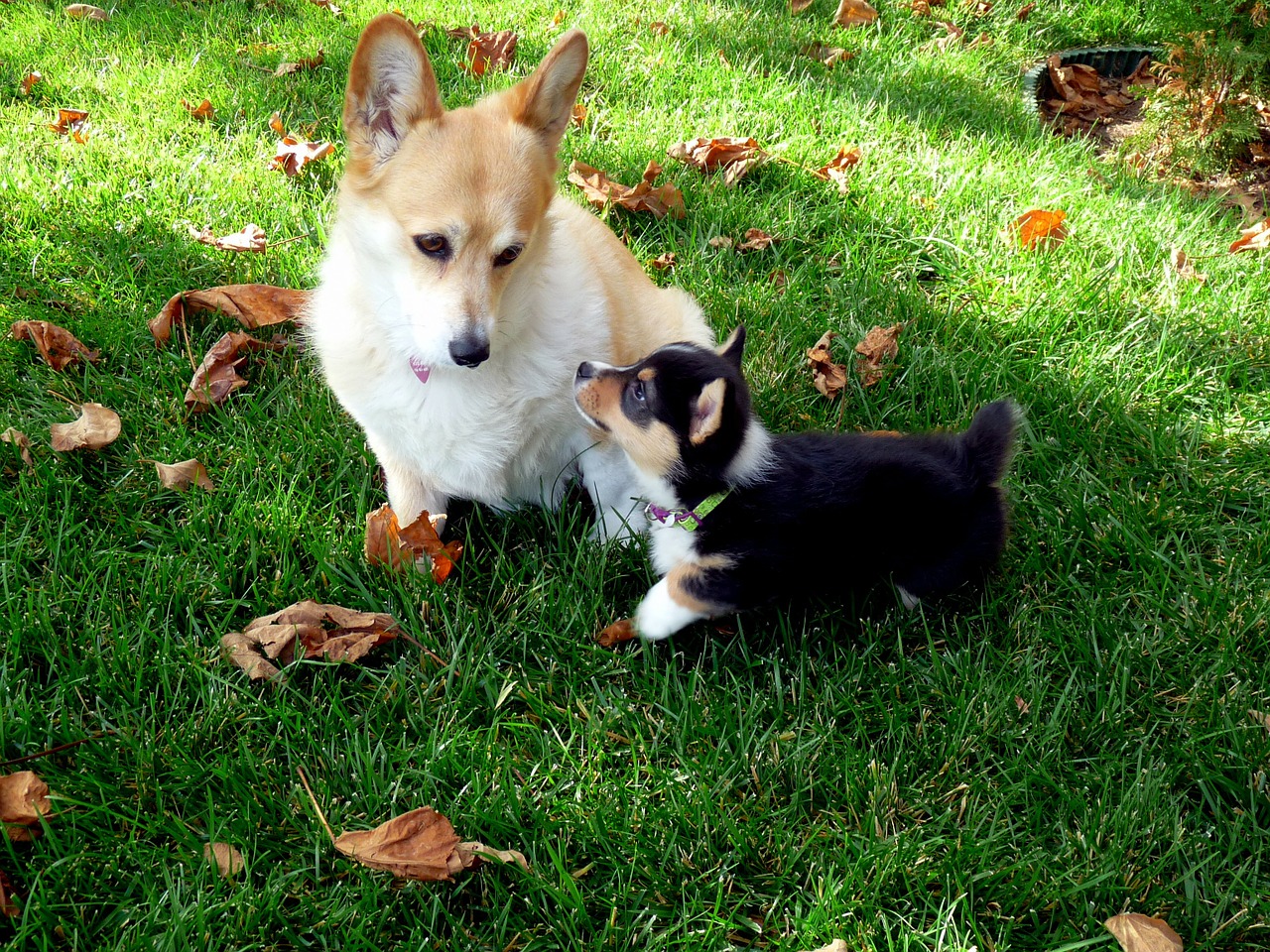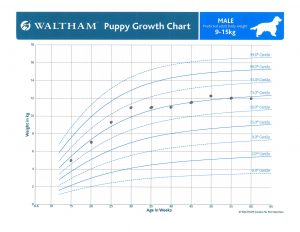
the scientific study of pet nutrition by veterinary nutrition specialists and experts.
Growth Guide: Keeping your Puppy on the Right Track

Growing puppies have very specific nutritional requirements that are different from those of adult dogs. Feeding puppies correctly reduces their risk for obesity and orthopedic diseases, and increases their chances for a healthy life. Puppies are very sensitive to nutritional imbalances which can include too much or too little of a nutrient or even improper balance between different nutrients. Nutritional imbalances that might have minimal negative effects – especially in the short term – in an adult dog can have disastrous results in a growing puppy, such as malformed or fractured bones, anemia, poor growth, skin problems, or even heart disease.
One of the reasons puppies have such specialized nutritional requirements is that they have to be able to grow from tiny puppies at birth to full-sized adults within approximately one year and stay healthy. Nowhere are the unique requirements more evident than in large or giant breed puppies. For example, a Great Dane puppy that weighs 1 or 2 pounds at birth grows well over 100 pounds within one year (and even more by the time they’re full-grown at 18 months)! But even small breed puppies need careful nutrition while growing to optimize their health.
Too many calories from puppy food, treats, and other foods during growth can cause puppies to become overweight. However, even before those extra calories cause a puppy to become overweight, they cause puppies to grow too quickly which – especially in large breed puppies – can increase their risk for bone and joint problems that can affect them for their entire lives. Keeping your puppy at a perfect body condition score of 4 to 5 (on a 9-point scale) is critical (and it’s better to err on the side of your puppy having a body condition score of 4 or even a little lower, than to having a body condition score over 5). But you can also help ensure an ideal growth rate for your puppy by adding some additional steps.
Starting off on the right paw. Recently, I wrote about a step-by-step process to select food to start your puppy off right so they get all the protein, amino acids, vitamins, and minerals they need during this critical growth period.
The Goldilocks principle for growth (not to fast and not too slow; just the right rate). Finding the right rate of growth for puppies can be challenging because it changes over the course of the growth period. Puppies go through growth spurts and plateaus as they grow so adjusting the food to match these changes isn’t easy. While assessing body condition score regularly is very helpful, it is not sensitive enough in growing puppies to ensure they grow at the ideal rate.
Keeping your puppy on track: One very helpful resource to help your puppy grow at an ideal rate is the WALTHAM™ Puppy Growth Charts which were developed using data from 50,000 healthy young dogs of different breeds and sizes. These charts can be used to follow your own puppy’s individual growth rate compared to standard healthy growth curves (very similar to growth charts routinely used in children). Using these charts can help puppies grow at an ideal rate and reduces their risk for becoming overweight (I’m seeing more and more overweight puppies). I’ve used these charts and find them to be very valuable – especially during growth spurts and plateaus – to be able to adjust the amount of food to keep puppies growing at the right rate.
- The charts are broken down by sex of the puppy and expected adult weight. You can estimate expected adult weight from the parents’ weight (if known), from breed standards, using the puppies’ current weight and age, or talking to your veterinarian (some DNA tests will also give you estimated adult size). You then select the chart that matches your puppy’s sex and expected adult weight (there are 10 different options). One limitation is that the charts don’t go above an expected adult weight of 88 pounds.
- Puppies should be weighed at least monthly until they are 6 months of age and then, assuming things are going well with growth, every 2-3 months after that (although there’s nothing wrong with continuing to weigh them monthly). Ideally, they would be weighed at your veterinarian’s office so calibrated scales are used and you get accurate weights. However, if you’re able, I think it’s very reasonable to purchase a digital pet or baby scale so you can weigh them at home regularly (just don’t rely on holding your puppy and using a human scale to weigh them by subtracting your weight – this is too inaccurate). Each time you weigh the puppy, plot their weight on the chart for the age of your puppy on that day. Your puppy should follow a single curve on the chart over time. If your puppy jumps from one curve to another, they may be growing too quickly or too slowly so you should talk to your veterinarian and consider some adjustments. The site has helpful tips, detailed instructions, and a video on how to use the charts. An example chart for a dog that matured at about 26 pounds (12 kilograms) is shown below:
- Besides being a useful resource for yourself, I like that the charts give you important information to discuss with your veterinarian during regular puppy visits. If your puppy is growing too slowly, it might be due to the amount or type of food, but also could be related to health issues that might need to be investigated. If your puppy is growing too quickly, possible solutions include:
- Making sure you’re not overfeeding the puppy food
- Reducing the number of treats or getting creative with rewards. Treats should make up no more than 10% of a dog’s total daily calories so take an inventory of all your puppy’s treats – dog treats, training treats, rawhides, bully sticks, dental treats, and people food. These can add a lot of calories and easily contribute to your puppy growing too quickly (and if more than 10% of total calories, can unbalance your puppy’s diet, making it less nutritious)
- Changing to a puppy food that has fewer calories per cup or can than the current diet. But PLEASE don’t change to an adult food before 12 months of age in small, medium, or large-sized breeds (18 months of age in large breed puppies)!
Optimizing nutrition during a puppy’s critical growth period lays the groundwork for a healthy life. These growth charts and tips can help you keep your puppy on the right path.
Want to read more information on feeding your pet?
Subscribe to always know when we add new material!
Recommended Posts

Can Diet Help With My Dog’s Seizures?
January 18, 2024

The Most Popular Holiday Foods…That Your Pet Should Avoid!
December 08, 2023

Veterinarian Recommended Pet Foods: What You Need to Know
November 05, 2023


